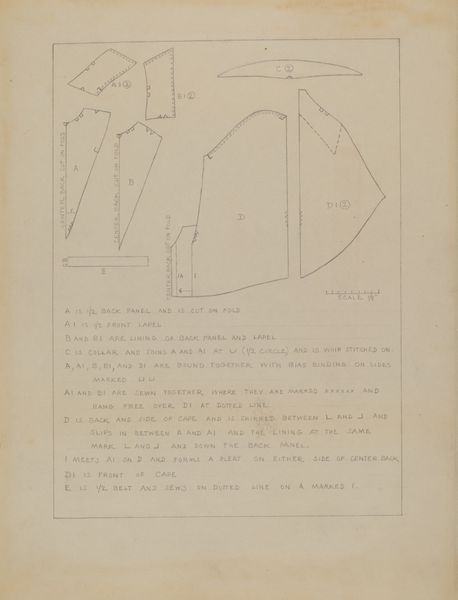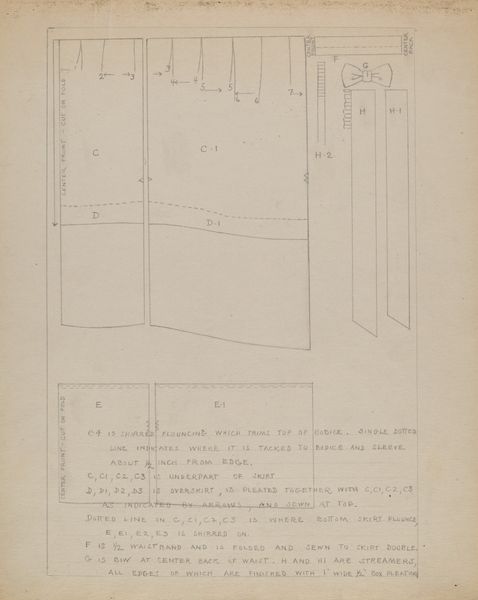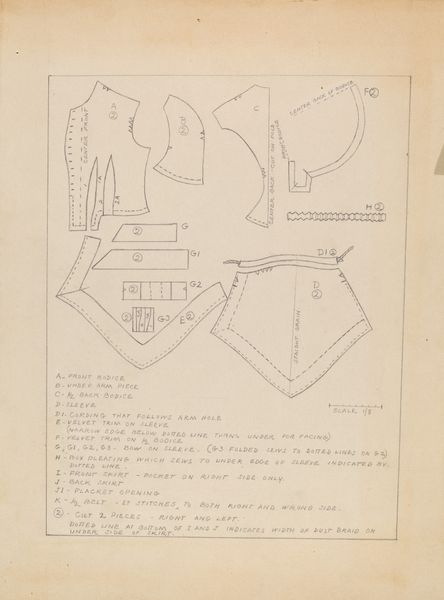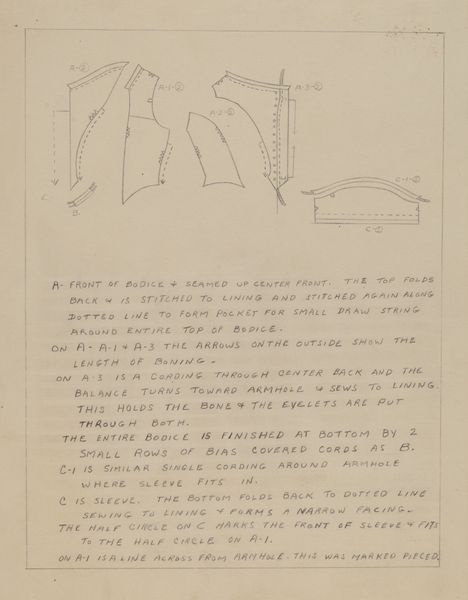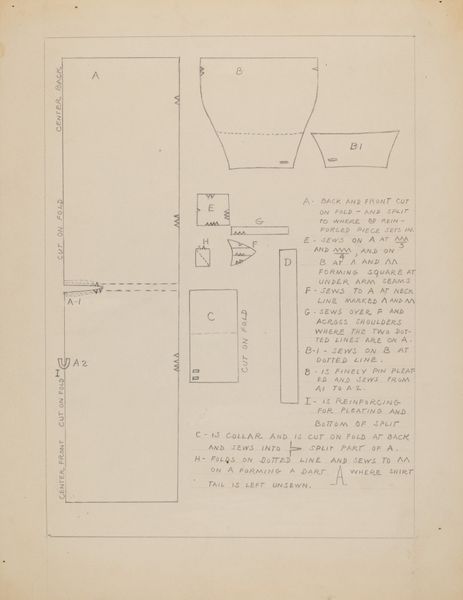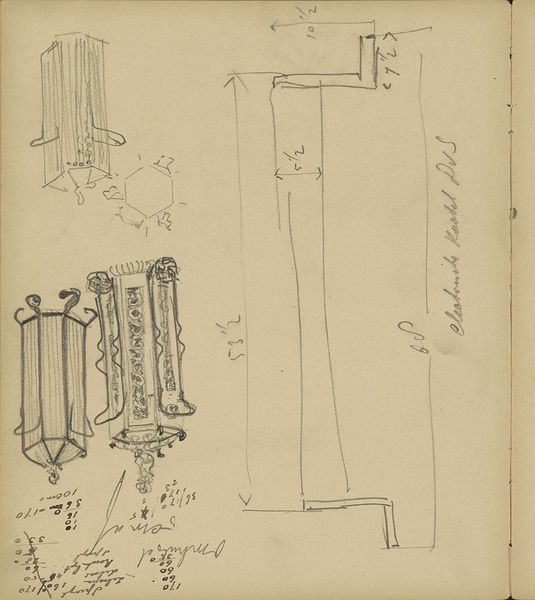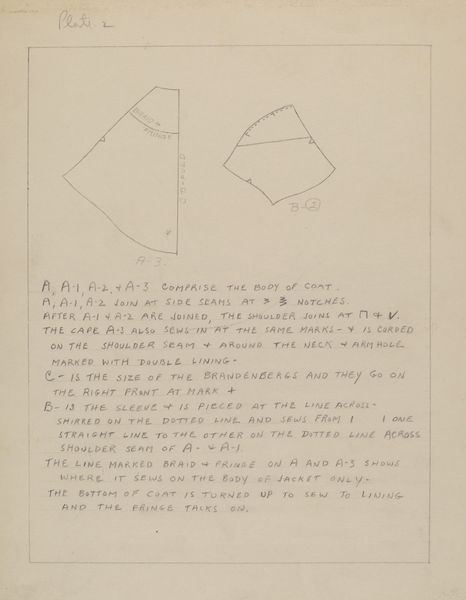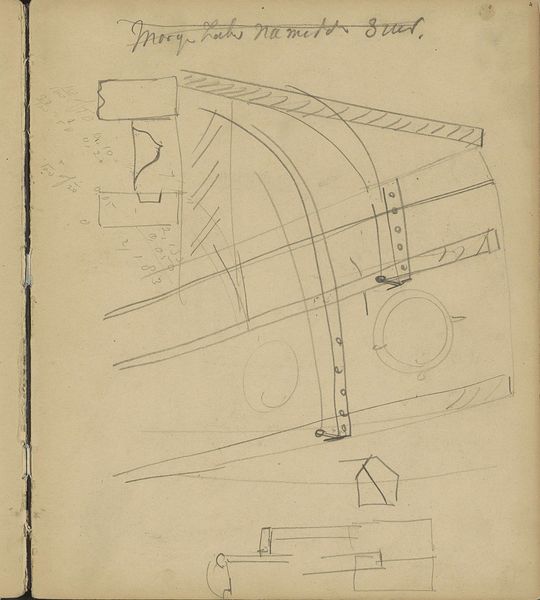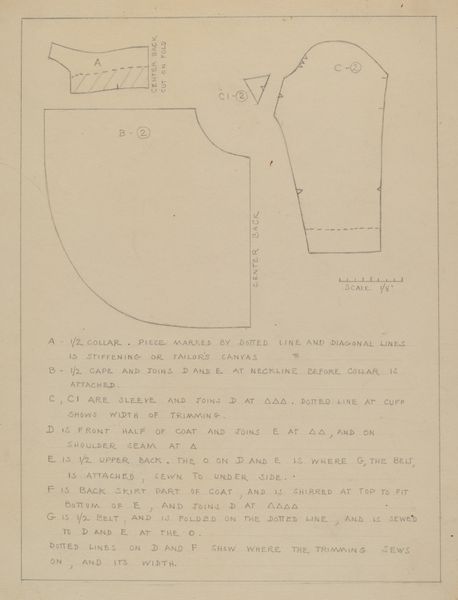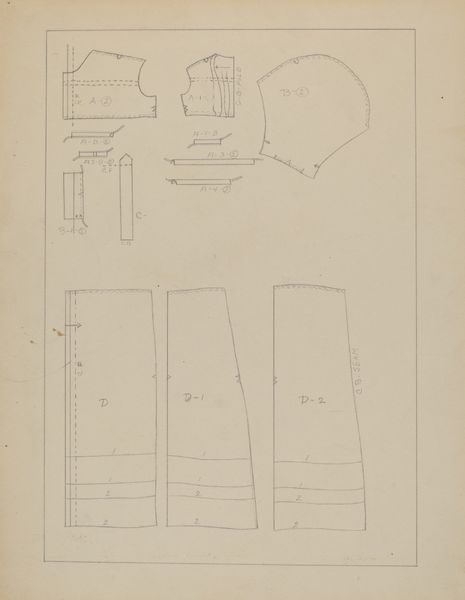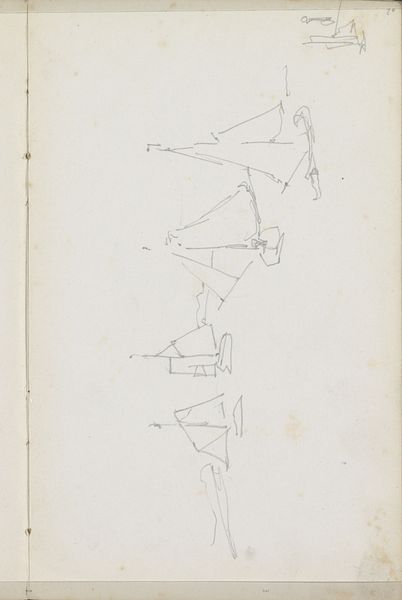
drawing, mixed-media, paper, pencil, graphite
#
drawing
#
mixed-media
#
paper
#
pencil
#
graphite
Dimensions: overall: 27.9 x 22.4 cm (11 x 8 13/16 in.)
Copyright: National Gallery of Art: CC0 1.0
Curator: This delicate work, titled "Dress Pattern," dates back to approximately 1936. The artist, Emery Herrett, utilized a mix of graphite, pencil, and drawing on paper to create it. Editor: My immediate reaction is that this feels incredibly intimate. It's a glimpse into a creative process, almost like uncovering a secret. The technical details, the hand-drawn lines…it whispers of domesticity and personal expression during a specific time. Curator: Precisely. When considering this piece, the societal role of women during the 1930s comes to the forefront. Creating clothing at home was often a necessity but also a creative outlet, and studying these patterns offers a tangible connection to that experience. Editor: It also speaks to the constraints placed on women. Was this born of necessity or choice? Were commercial patterns unavailable or unaffordable, necessitating the creation of these hand-drawn guides? It's a social commentary, even if unintentionally. The notations provide such insight. Curator: Exactly, the notes are integral to the piece; consider the feminist perspective here. This isn’t simply about constructing a dress; it's about agency and skill. This pattern symbolizes the ingenuity and resourcefulness of women in a world where their creative pursuits were often confined to the domestic sphere. Editor: The pattern's very medium underscores the ephemeral nature of fashion trends. Though initially functional, destined to be cut apart and sewn into fabric, it survives as an object, detached now, carrying layered stories. Curator: Absolutely, considering the artwork's public role today; its value lies in the visual storytelling. These fragments reveal stories beyond fashion, referencing identity, and everyday lives through surviving, mundane objects. This intersectional view helps us to question the traditional hierarchies of art. Editor: So true, viewing it beyond its literal representation expands understanding. By embracing philosophy and critical theory, we understand more completely. Curator: This drawing shows the potential of archives as places to recover marginalized voices. What might appear technical reveals narratives about creativity and constraints. Editor: Looking at "Dress Pattern," then, we begin to examine beyond the lines on paper. Its simple appearance speaks powerfully, highlighting how women navigated economic and creative constraints in the 1930s, their acts as enduring statements.
Comments
No comments
Be the first to comment and join the conversation on the ultimate creative platform.
